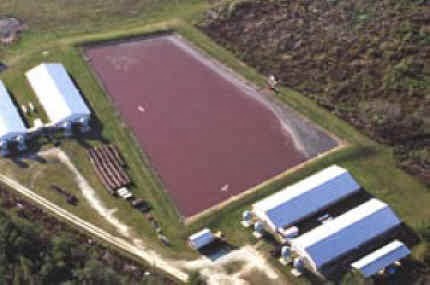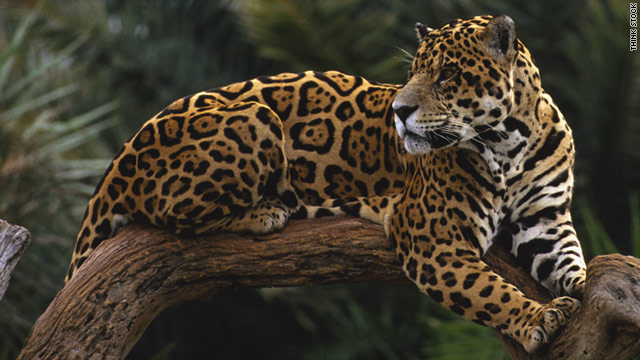Bald eagles, along with other birds or prey, have made an astounding comeback since the '60s: the age of DDT! In 1963, there were only 417 nesting pairs in the lower 48 states of the USA. DDT, used as an insecticide, accumulated through the food web and eventually made its way into the eagles. The poison caused the eagles to lay eggs with very thin shells, which resulted in a nesting failure being a common thing.
But throughout the '60s, scientists realized the threat of DDT. In 1972, the USA banned DDT's use. Ever since then, bald eagle populations have been climbing steadily—the magnificent birds were taken off the Endangered and Threatened Species List in 1999!
What a victory! The hard work of the scientists and conservationists of the '60s and '70s paid off. Now places like Berry College in Georgia are graced by the presence of a nesting pair of bald eagles and their many beautiful chicks. Check out Berry College's live camera featuring literally a BIRD's-eye-view of the happy couple's nest! It's quite amazing---just a minute ago I saw both parents feeding their young chick.
[Click here to be directed to Berry College's Eagle Cam page]
Victories like the bald eagle's show us that anything is possible if we care, try, and believe in success!
12.3.14
17.2.14
Influential Issue: Factory Farming
 |
| This idyllic farm is actually a sanctuary where animals go when rescued from horrific factory farms and other abusive situations. |
To supply America's growing need for meat, dairy, and eggs, idyllic farms have been smothered with massive-scale factory farms. Aside from countless moral concerns, this method of farming is one of the biggest, and growing, threats to today's ecosystems.
 |
| A factory farm. The cows will spend the pretty much all of their lives in those cages—until they're lead the slaughter. |
Why is it such a problem?
 |
| An amazonian rainforest cut down for soybeans in cow food. |
 |
| A feces pit on a pig factory farm. It gets in pinkish color from not only poop, but blood. And anything else that falls through the pigs' cages and onto the collection tray. |
2. What goes in one end of an animal has to come out one way or another! When the manure falls through the bottom of an animal's cage, it is often dumped into a giant pit. Sometimes, the pit will leak and create giant swaths of devastated land.
3. The tools used to breed, keep, transport, slaughter, and process the animals are mechanical and consume monumental amounts of energy. First, energy is used to transport water to corn and soybean fields. Energy is used to harvest the crops, then transport them to the factory. Energy is used to manage the feeding and lighting, egg collection, artificial insemination. It's used when the animals are transported to the slaughter house. Chickens are often hung upside down on a conveyer belt while their heads are run through electrified water. Bigger animals, like cows and pigs, are killed by a bullet in their brain, or a knife to their throat, or being placed in boiling water. Then automated or semi-automated machines process the dead animals: skinning, feather-plucking, disemboweling, cutting, and packaging. Then the processed meat can be shipped to a warehouse or a store. All of this requires conveyer belts, wheels that turn around and deliver animals to different stations, funnels, pans, heating/searing units, tumbling—monumental amounts of energy.
What can you do to help?
A surprisingly easy thing to do is just eat less meat. Or no meat. You might say, "But I can't live without meat!" That's what I said just five years ago. Then I learned the truth about the meat factories of today and decided to make the leap. I ate a cheeseburger my very first day I said I was a vegetarian. But then the veggie habit just seemed to stick. Over the years, I've added layers to my vegetarianism: now I'm vegan, and don't eat or purchase anything derived from an animal. It certainly didn't happen overnight, but every little step counts toward a more forested, diverse, happy planet.
 |
| ...and let this jaguar roam the amazonian jungle! |
To learn more about...
- Becoming vegan: getvegucated.com
- Slaughterhouses: meat.org
- Health benefits: veganhealth.org
Some other helpful vegan/vegetarian links:
- compassionatecook.com
- 'Going Vegan' Slide Show
- peta.org - living food
5.7.13
Influential Issues: Logging

Wood is spectacular! It's flexible, strong, burnable, pulp-able. It's also very pretty—have you ever looked closely at the grain of wood?
 |
| A dense rainforest in Washington State. A pair of Hyacinth Macaws in their nest in the Amazon Rainforest. Aren't they cute together? |
 |
| Bacteria in a pond. |
...But! Forests are spectacular too! They host a diversity of life that's seldom found anywhere else. They are homes for billions upon billions of plants and animals, from the tiniest weevil to huge eighteen foot-long anacondas. Not to mention other life forms as well—there can be as many as one billion bacteria in a single teaspoon of nutritious forest soil. Forests are one big pile of life, all living and breathing together.
Logging has become more and more of an issue for forests all around the world, especially around the tropics where the jungles are wonderfully vibrant and filled with exotic and expensive woods. There are many different ways to cut down trees, each with its own environmental factors. Conservationists predict that if logging continues at the rate its going now, then over half the Amazon will be forested no more by 2030.
 |
| This jaguar needs lots of space to hunt. If too much forest is cut down, it will become endangered, then extinct. |
One common method of logging is the 'Slash and Burn'. With this method, all the trees in the area are cut, then, to enrich the soil for the next crop, the logger burns all the stumps and brush on the ground. This burning returns the minerals to the soil, but even with the deadly blaze plant life cannot grow in its former abundance for fifty years or more.
The tools used to cut down trees are super high-performance, and make cutting a swath a breeze. Check out the video below and you'll know what I mean!
Many non-recycled paper products are made from trees taken from virgin forests, and are doing their own small part in the massive-scale deforestation of the Earth. Something as innocent as tissues for blowing your nose are usually taken from forests that have been standing for as long as humanity (and the many billions of flora and fauna living in said forest) can remember.
What can you do to help? You can use less paper! Try writing down all things paper that you use in a day, and push yourself to cross off any of those items. You can use reusable or sustainable alternatives, like a cloth grocery bag or handkerchief. There are also many high quality, inexpensive 100% post-consumer recycled items available that you can use for any sort of paper goods: stationary, notebooks, printing paper--the possibilities are endless.
So much has been done to slow down the axes already--as you can see by the graph below! Not just the Amazon has that steep drop, too.
There is still much to be done, and together, we can make a difference! Little or big, positive or negative, we are constantly pushing forward.
Subscribe to:
Comments (Atom)



.jpg)

